4 places to explore in Japan today!
Some of us growing up always wondered what it would be like to travel to Japan. We always pictured it in our minds and hope that one day we would go to this wonderful land. Known as the ‘Land of the rising sun,’ Japan is located in East Asia. The country is an archipelago made up of multiple islands. In the warmer season hiking is the best activity where you go climb up to the summit of the mountains or shrines. Due to its mountainous landscape, hot springs are essentially everywhere! And in winter the wildflowers and flora are covered in thick snow and the best thing to do are snow activities such as skiing. You can never run out of things to do in Japan!

One surprising thing that you should know if you are planning a trip there is the balance of historical culture and modern advancement. The general perception from the outside world is that Japan is a leader in latest and futuristic technology which is true. But once you visit there you’ll realise how much of the traditional culture is still a strong identity of this captivating nation. The natural landscape and the thrilling sites are a huge contributor to the aesthetic image. You will learn about all this in the following readings! So, before you rush your travel, know all the best places to visit and know what to expect from this fulfilling journey!
1. Tokyo
If we are going to talk about the wonders of Japan, we have to start with its capital city. Tokyo is the epitome of the mixed culture of old and new. The things to see and explore are SO DEEP it will go beyond your horizon! At one turn a certain region will look like a sneak-peak of the future with the stylish buildings and in another turn, you will feel a blast into the past when you see stacks of wooden houses. At present day, Tokyo is one of the most thrilling places to go for shopping, leisure activities, heritage sites and dining enjoyment.

Art and Craft
Tokyo is home to some of the most breathtaking and mesmerising artwork and also distinct cultural events. Their artwork remains part of their culture. Performing arts based from centuries ago are still being played on stage and is still admired by the locals. The Nakamise shopping street is a lively area where visitors can buy souvenirs such as kimonos and chopsticks which are part of their cultural arts. Sumo wrestling is a huge part of Japanese culture and the event draws many crowds. There is a sustained tradition in the Spring season where the locals go outdoors and appreciate the beauty of the cherry blossoms.
Different eras of Japanese art history and contemporary art are displayed in museums across the city. This brings to life the nature of pop culture and advance technology in contrast to appreciation for the past. That’s what makes Japan so unique! And when walking through Yanaka there are many small art galleries to go view.
Food places
The food scenes are absolutely spectacular in Tokyo! It’s not just about the famous restaurants and celebrity chefs but what makes it so distinctively good is there is a good location consistently throughout the city. In every turn you will find a good or great restaurant or café. There are all scattered and there are many options to choose from such as a high-class sushi bar on one street corner to a noodle shop on the next. Every food shop is equally admired and receives huge attraction.
The locals love to eat out so this will be a great way for you to experience living amongst them and taste the diverse food the city offers. Tokyo is well known for its street foods and you definitely cannot miss out if you go there! Deep-frying is commonly used for many consumable goods in the street-food places. From the skewered to the sweets, there is a variety of options to eat. The most beloved and regularly consumed is the takoyaki, which are octopus-filled dough-based balls. Here are some other commonly eaten street foods
– Yakitori (Skewered chicken pieces)
– Tamagoyaki (Rolled omelette)
– Onigiri (Rice balls)
For sure, you will get addicted to Japanese foods!
Meiji Shrine Visit
This is Tokyo’s most famous Shinto shrine and it is surrounded by a forest giving it a pleasing view for visitors. It is a shrine commemorated to Emperor Meiji, who paved the way for Japan’s exposure to the Western world in the 19th century. There are multiple shrine buildings where the entrance to the place is through a massive torii gate. Once inside the shrine, visitors can wash themselves by the water station and throw a few yen into the offering box to receive ‘good fortune’.

[Bird’s Eye View – Tokyo Skytree]
A guide to this astonishing city would not be complete without viewing the whole of Tokyo. If you want to see the entire geographical landscape of this city then you must go up the Tokyo Skytree, the tallest building in Tokyo. The interior building is creatively designed to have four elevators, each symbolising the four seasons which takes visitors up to the 350 metres platform. With extra charge, there is an option to go up to 450 metres where there is a transparent glass floor for the courageous ones to try!
2. Kyoto
Kyoto has a large historical significance in Japan’s history. It served as the nation’s capital and the residential area for the emperor from 794 up until 1868. In its history, Kyoto has been a victim of many wars and chaos but due to its historical profile, the city was removed from the list of targeted cities to drop the atomic bomb during world war two. Many shrines, temples and historical artefacts remain intact. Today the city is home to around Meiji Shrine, Tokyo 2000 shrines and temples. Apart from its buildings, there are many noteworthy sites like beautiful gardens and traditional teahouses.
Golden Pavillion
The Kinkakuji, commonly referred to as the Golden Pavilion, is one of the attracted places to visit in Kyoto. It is very ordinary for many tourists to come to this site! Back in 1397 it used to be a villa for the shogun Ashikaga Yoshimitsu, then it got turned into a Zen temple in the 1400s. The pavilion has been burnt multiple times in the past with the latest being in 1950 when a monk lit it on fire before attempting suicide. In present day the pavilion has been restored and renovated into a wonderful site and is part of the World Heritage Sites. The two upper floors are covered in gold leaf where the ashes of Sakyamuni (Founder of Buddhism) are rumoured to be stored inside! The temple’s look complements the nature of Kyoto and it looks beautiful all around! The entrance fee is 400 yen which is around 5.6 in AUD. So, if you are all for aesthetic buildings and value beauty then you definitely need to stop by this place.

[Heian Shinto Shrine]
This shrine dates back to a more recent history. It was established in 1895 to commemorate the 1100th anniversary of the founding of Kyoto as the capital city of Japan. The capital was moved from Kyoto to Japan in 1868. The entrance to the shrine is welcomed through a giant torii gate. The Shrine grounds have a large open space and a wide court in the middle. The main buildings are a re-model of the original Imperial Palace during the Heian Period, built in a smaller version to the original. In the rear side of the main buildings is an attractive and paid garden with different styles of plants, ponds and buildings. The garden is distinctly recognised for its cherry trees which blossom later than the rest of the cherry trees. The shrine is often used for cultural-themed events such as the Jidai Festival which is held on the 22th October of each year, anniversary for the city’s foundation. This event holds a parade where people wear costumes relating to different eras of Japan’s past from the Kyoto Imperial Palace to the Heian Shrine.
Nishiki Market
While you are in Kyoto you must not miss checking out the Nishiki Market. This marketplace goes back to more than 400 years is one of thrilling places in the city. This market has over 130 markets and is around 400 metres length in area. It is a great place to explore in your afternoon time. Food product and food accessories are the main items for sale ranging from cookware to seafood. So many tasty foods to choose; tofu, fried fish cakes and smoked duck to name a few. Meet and interact with sellers and the locals. The atmosphere is genuine and exciting.
Gion District
If you are visiting Kyoto then it is mostly likely you will go through the Gion district. This district is famously known for Geishas and Maikos who are local entertainers. Also, this place has gained attraction for its many traditional wooden houses. The Hanami-Koji Street in Gion is the most attractive place for tourists as it has nice dining places. The street is pretty much featured with restaurants and teahouses. Tourist come here to mainly see a geiko or maiko who entertain guests at teahouses or dining places. The entertainers have light conversations, serve drinks, play games, and perform music and dance! Although thing
to keep in mind is that the geiko are quite expensive to hire but it is worth the spending to really engage in the Japanese art and culture!
3. Osaka
This city has its own set of unique traits in relation to Tokyo and Kyoto. it is the third largest city in Japan, but the lifestyle is contrasting to the bigger cities. Nonetheless it is a very enjoyable city with many leisure activities to do. It is a place of lively environment with modern architecture and international-level institutions including museums and theatres. The locals are very laid-back people and love to have a good laugh! The most effective way to feel the vibe of this city is through eating cuisines and drinking at the pub with the local people. There are many places to visit in Osaka and we will outline the best ones!
Osaka Castle
First and foremost, the best way to understand the history of Osaka is by visiting the Osaka Castle. The original castle was built and completed within three years in 1586 and became the largest of its kind during that time. The infrastructure was built by Toyotomi Hideyoshi, a renowned warrior and politician during that era. It was destroyed a few more times after the fall of the Toyotomi Empire and reconstructed to its present-day form in 1931. Despite the current structure being ruined during WW2 the place still feels like experiencing the real-life feudal Japan. It’s one of the prideful attractions that Osaka has to offer. Within the walls of the castle lies a museum which will give you a great view to the city if you go up to the top. The museums also includes information on the history of the castle and the city. The natural landscape surrounding the castle extends a long way and the gardens around it look very aesthetic in each and every season. Cherry blossoms grow and attracts many locals whilst also leaves fall in autumn.

[Dotonbori Shopping District]
Probably the most attractive place to visit in Osaka is the area of Dotonbori. This street runs side to side parallel to the Dotonbori canal. The area is known for its entertainment activities, colourful signboards and dining places. Dotonbori is popular for its fancy restaurants, cheap street foods and lively bars. Make sure to save some money for your Osaka visit to enjoy a feasting spree in Dotonbori! The glow of the buildings and signs at night is just magical where the neon lights reflect on the passage of water and give a glittering sight. Nightlife at Dotonbori is a must-see for visitors who stop by at Osaka. There are many eye-capturing signs outside of shopping buildings but look out for the Glico running man! It’s a neon sign that been there since 1935 and it has received multiple updates since it was first installed. It’s one of the most common places to gather and a photographic icon of Osaka.
The Umeda Sky Building
Whilst Osaka offers museums and historical buildings, it also provides a modern architecture to complete your trip! This Skyscraper is a landmark that identifies and represents the city’s significance. That 170 meters view from above is thrilling yet nerve-racking but it lets you understand and appreciate the beautiful landscape of the city. Besides the magnificent bird’s eye view, the building itself is an artwork and filled with wonder. It consists of two towers connected at the top by a platform structure which attracts visitors. With additional features including the bridges and an escalator providing more attraction for visitors to roam around in. Before you exit, don’t forget to check out the urban garden on the ground floor which has nice footpaths, fountains and ponds!
4. Mount Fuji
And of course, the last but definitely not the least place to explore in Japan is Mount Fuji! Standing at 3776 metres tall, it is the highest mountain in Japan. Considered a sacred mountain by the locals, it has gained major popularity amongst travellers due to its height and beauty. The mountain is an active volcano that last erupted in 1707. It lies between the Yamanashi and Shizuoka prefectures and is visible from Tokyo on good days. Annually. Mount Fuji attracts millions of tourists to the mountain and its nearby towns. It is open for climbing in July and August if you are wanting the authentic experience through multiple routes and pathways. Over 300,000 people climb it each year during the designated timeframe and takes about 8 hours to reach the top. In the midst of your visit, there is an option for you to go to a nearby hot spring at Hakone.

There are a variety of places to visit that it is most likely you won’t have time for all of them. But the ones that are highlighted are definitely the most notable ones that you cannot miss during your time in Japan. Each city has its unique style and attractions but make sure to take advantage of this opportunity and experience as much of Japan as you possible can!


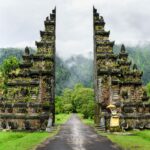





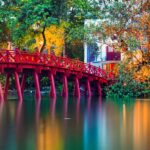
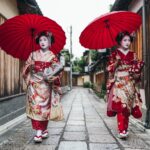
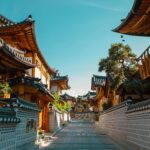
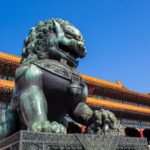













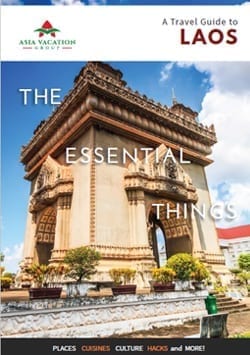

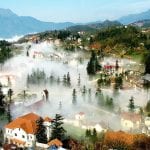



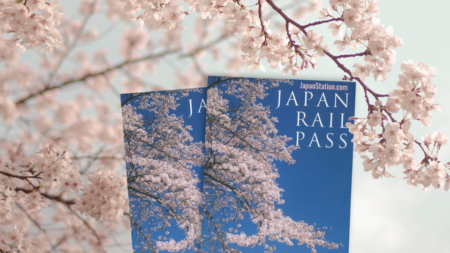
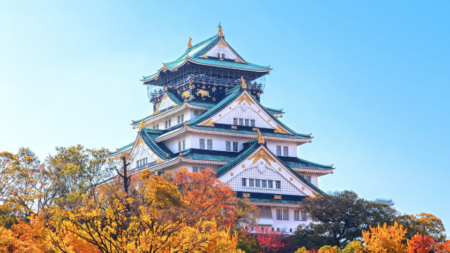

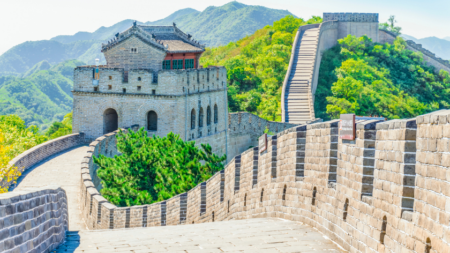
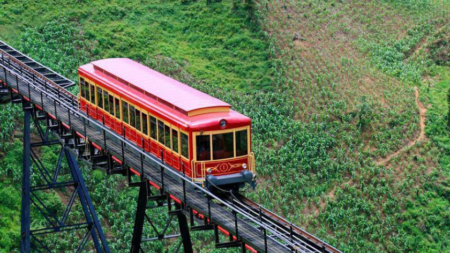

 planning
planning